![]()
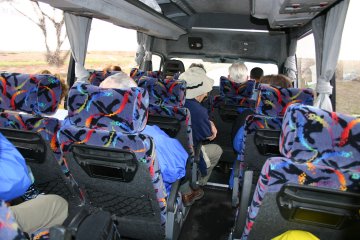
As you can imagine, we started off the day easy enough; a plush bus.
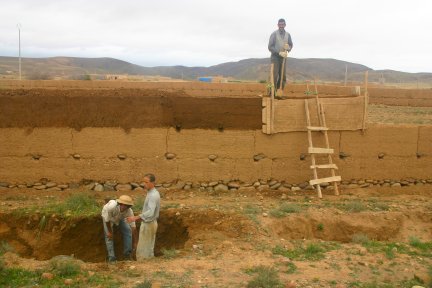
Throughout my story I have told you about the homes and kasbahs made of pressed
mud. We happened upon a structure being built and were able to see how the process
works. First the ground is soaked for about a week. Then the wet dirt is dug out of the
ground by hand and placed in a wicker basket.
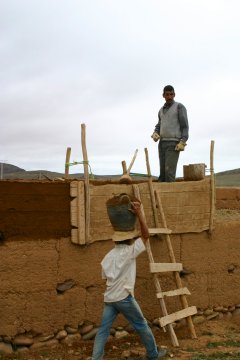
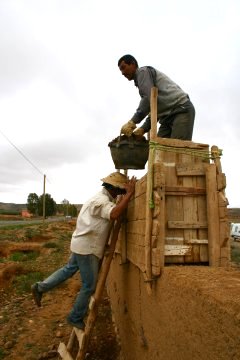
The wicker basket is placed on the head of the second workman and carried to the workman
filling the frame. There is but one single frame used, over and over again. It is about
8 feet long, 4 feet wide, and 4 feet deep. As the basket of wet dirt is dumped into the frame
it is then tamped down by the man on top while the guy with the basket goes to get another load.
When the entire frame is filled and the dirt tamped down the frame is moved into position for
the next section. The holes were you see stones is location of the bottom logs of the frame
which were pulled out when the frame is moved. The holes are left in place to allow the
entire section to "breath." Section after section the entire structure is built.
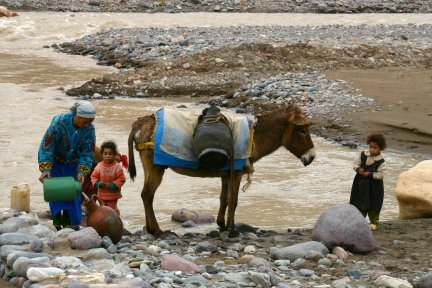
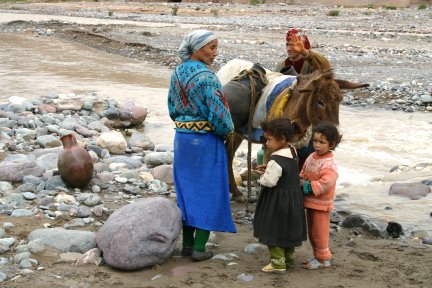
They are naturally reluctant to have their pictures taken.
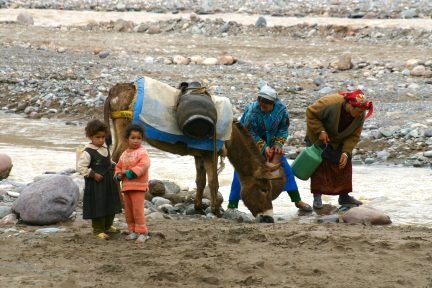
They go about their work after our tour director gets permission to take photographs.
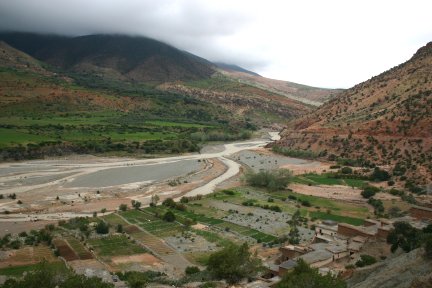
Higher and higher we go into the mountains on narrow gravel roads.
Villages so small they have no names huddle along the banks of the river.
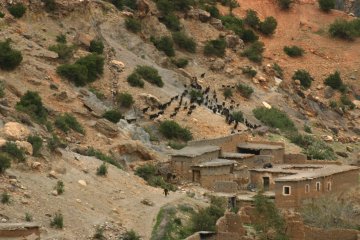
As we watch from the hilltop we see the shepards
taking their heards of sheep or goats out for the day.
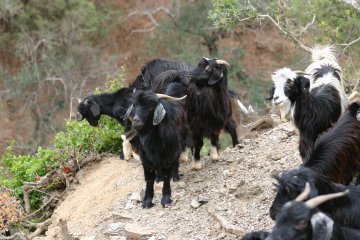
The herds move in bands along the same route, about 30 minutes behind each other.
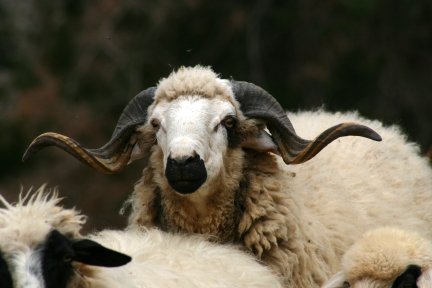
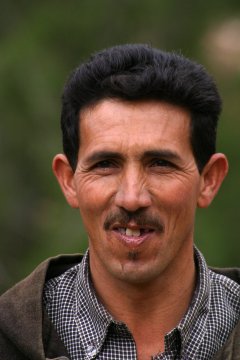
As we watch the herds move around us I have a different perspective of the shepard.
To be the shepard means you watch over your flock constantly; you take them out
for food and water in the day. You are not detered by the weather - wind, hot sun, snow,
rain. The herd depends upon you and your needs must come second. They are alone all
day with no one to talk to. You know each of your sheep by name - You can
recognize the sounds of each one's bleep and baa. You know which lamb goes with
which ewe. You know no seasons - unlike the farmer who cultivates, plants, and then harvests
but has a season between crops. At the end of the day you lead your flock
home to shelter and you make sure they have water and are safe before you go to bed.
They get no weekends or holidays off. As hard as their lives may be, their children
pay them the greatest compliment by saying, "I want to grow up and be a shepard
like dad."

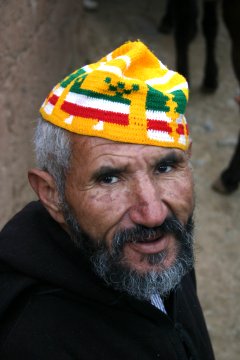
We finally arrive at the small village of Ruirgne where I meet my muleteer who
will lead me through the mountains. He intially walked beside me
but he soon learned that I knew how to ride a mule and he followed behind.
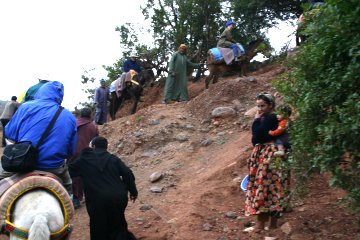
The is often steep and the muleteer hangs on to the
tail of his mule to pull him up the hill.
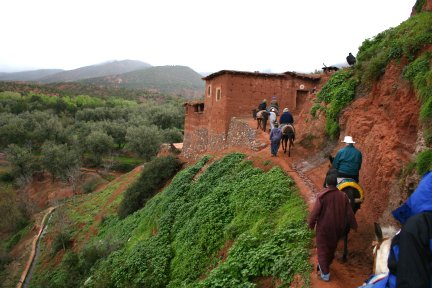
The roads aren't paved and there is no room for two lane traffic.
The mules' reputation for being sure-footed is well deserved.
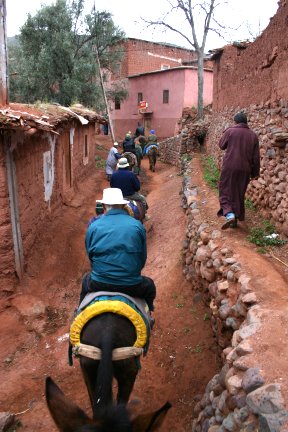
We go through villages which have no trails wide enough for a four wheeled vehicle.
The only way in or out is walking or on the back of a mule or donkey.
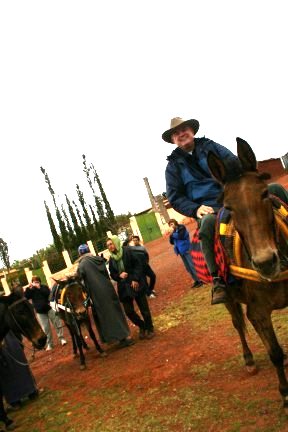
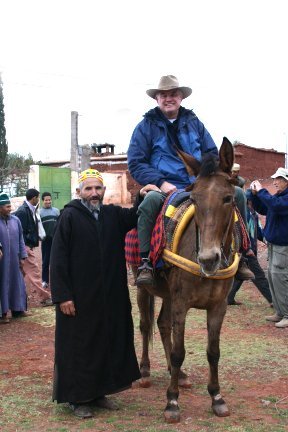
When we stopped at the ancient Jewish synogage/shrine of Rabbi Haim Ben Diouane
I asked my muleteer to take my picture. It is obvious he was not familiar with a camera.
This is the picture he took of me on his mule. Then someone else then took a picture
of me and him with his mule.
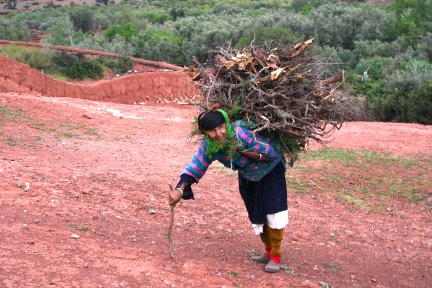
We see how harsh life is living in the mountains. Wood has to be gathered
and carried home on the back. A forward lean helps walk up hill.
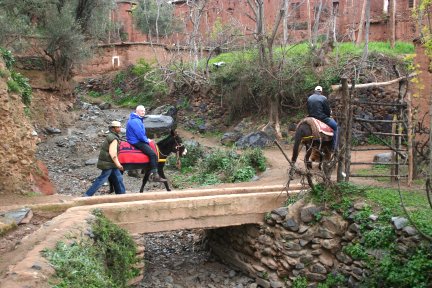
For us the ride was scenic with lots of opportunities for photographs but the ride through the
mountains was not easy. Some had mules and some rode donkeys. It was a hard ride for those
not accustom to this form of travel. I am sure that the people living here don't have
time to think of the scenery. Every day is one of old struggles and new challenges.
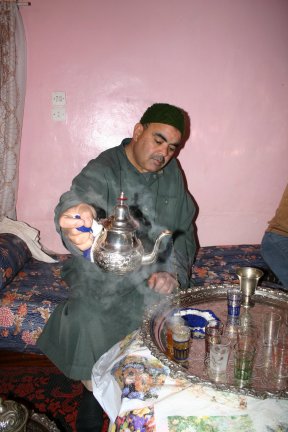
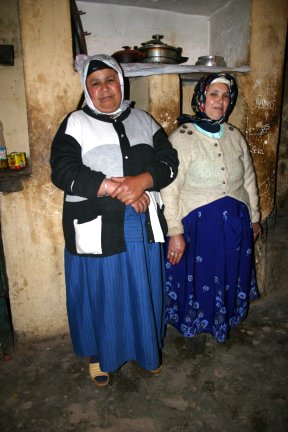
At the end of the ride we visited a small home and caught our breath while
we were served a chicken tajine and the traditional mint tea. While the man
always serves the tea his wife and sister-in-law stayed in the back room.
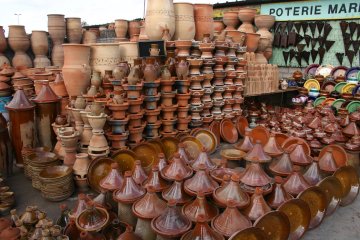
When we arrived back in Marrakech I asked our guide to take us to a place where
I could buy a tajine cheaper than those for sale in the souk. He had the bus stop
at a wholesale house where the "real" people of the city buy their ceramic products.
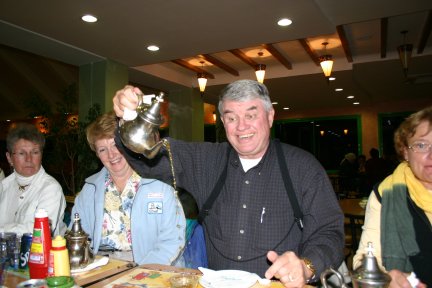
Dinner tonight was a real surprise. Tourists always wonder if they are really being
served the "local food." There is some suspicion that we are taken places just for show.
So tonight we were taken to a special place that dispelled any notion that we were not
being served the local food: We had dinner at an ESSO truck stop. You could order any
tajine you wanted - or if you were tired of a tajine you could order a hamberger and
french fries. I practiced the traditional mint tea ceremony - notice how high I can
airiate the tea before it hits the glass?"
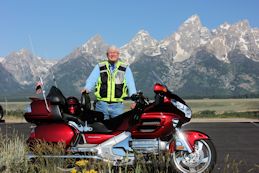
Belli at the Grand Titons, June 2015